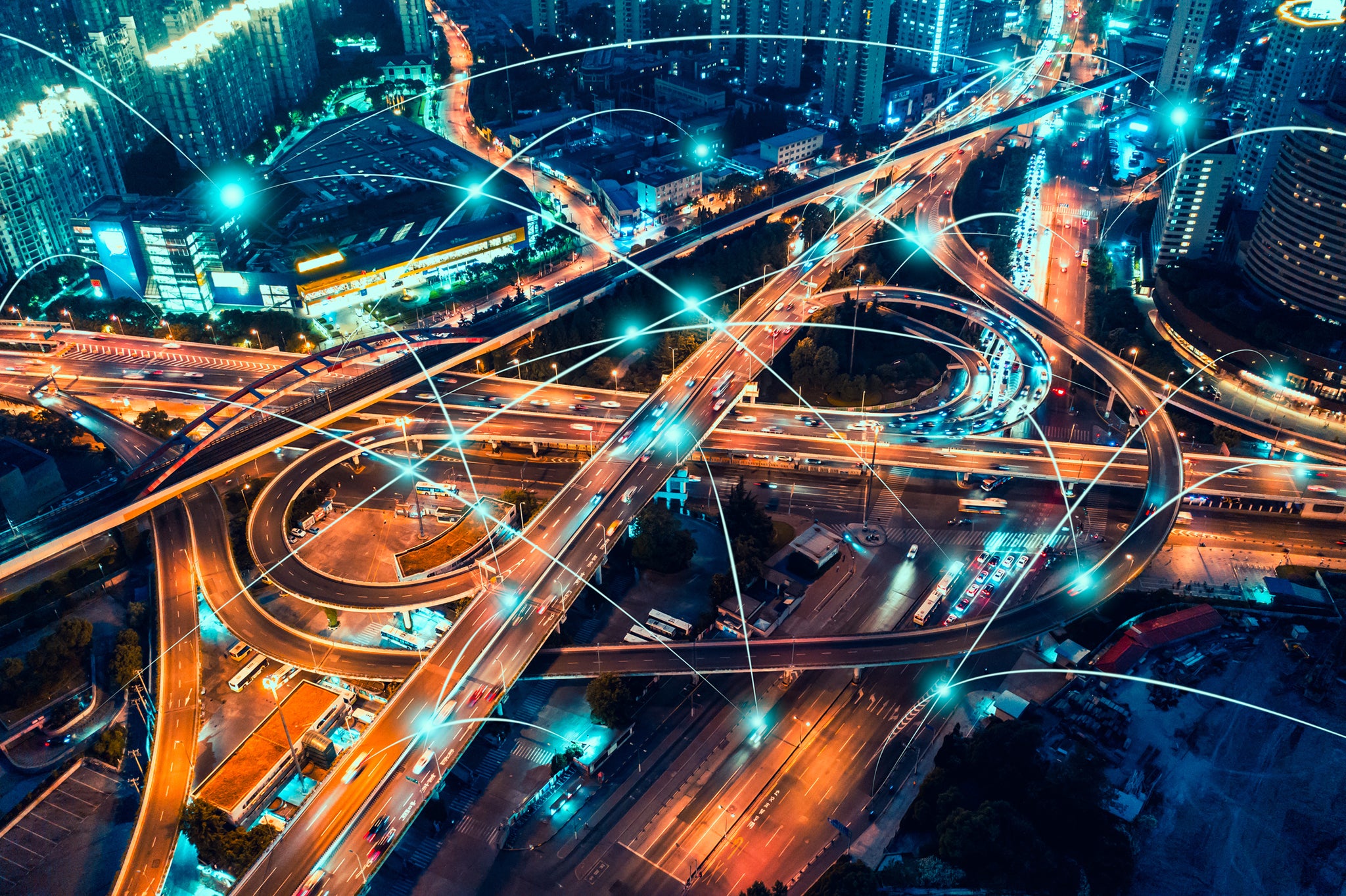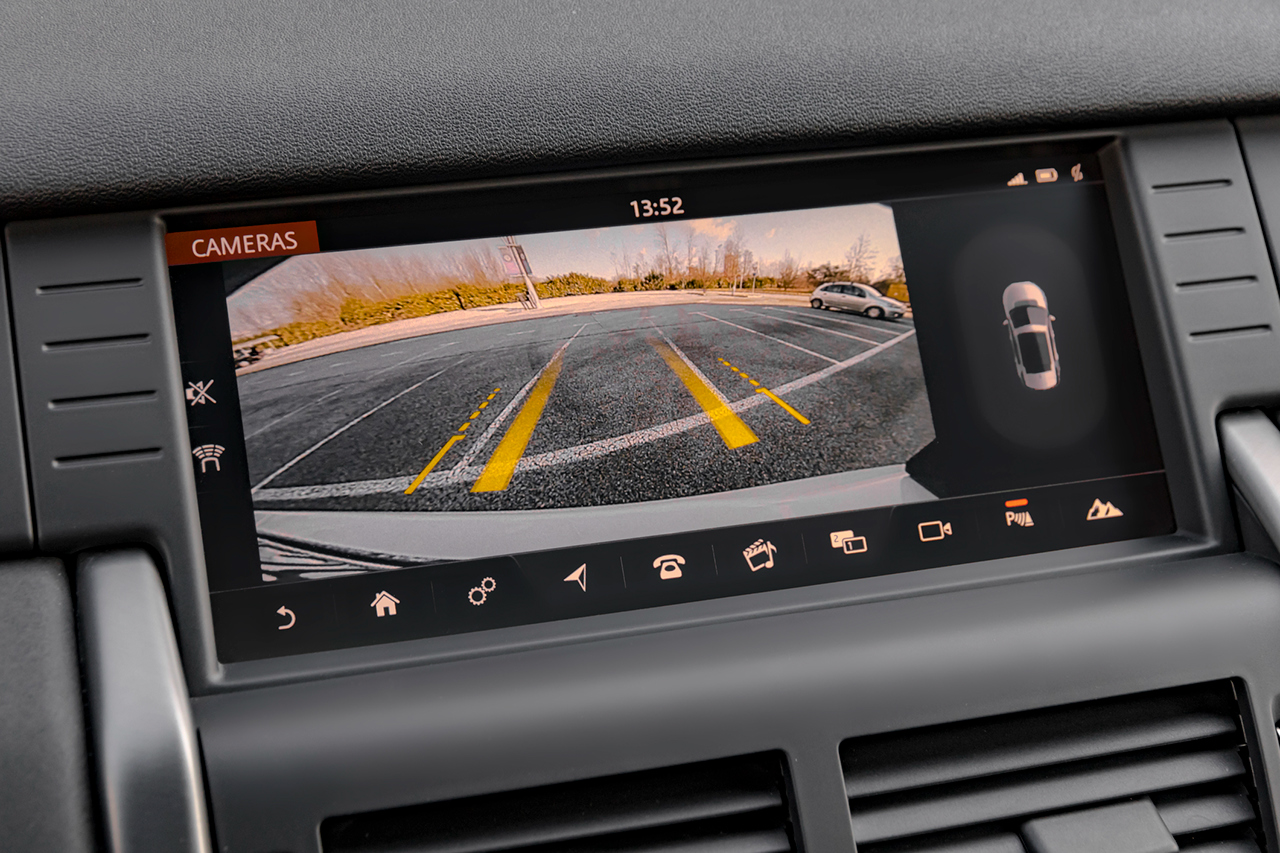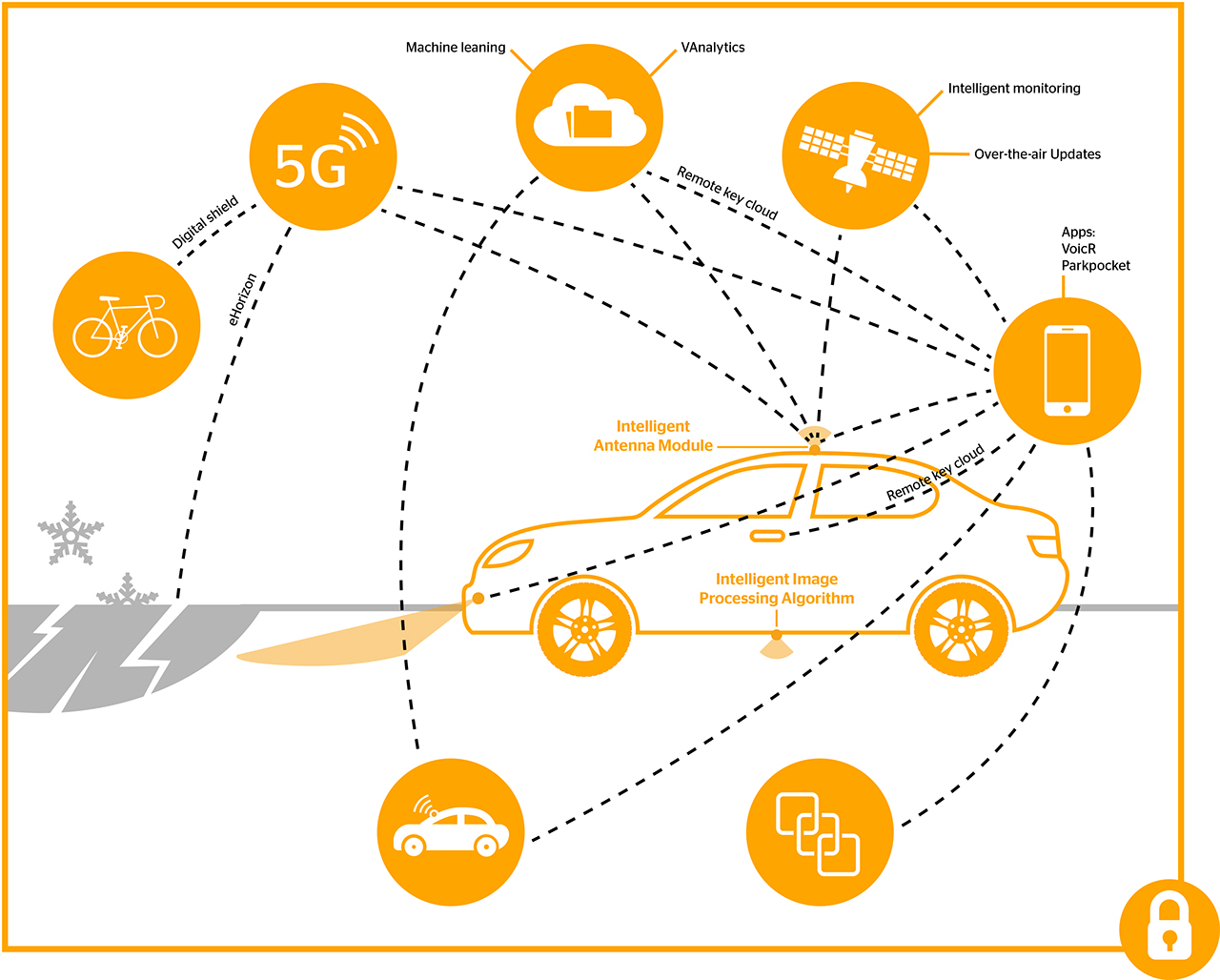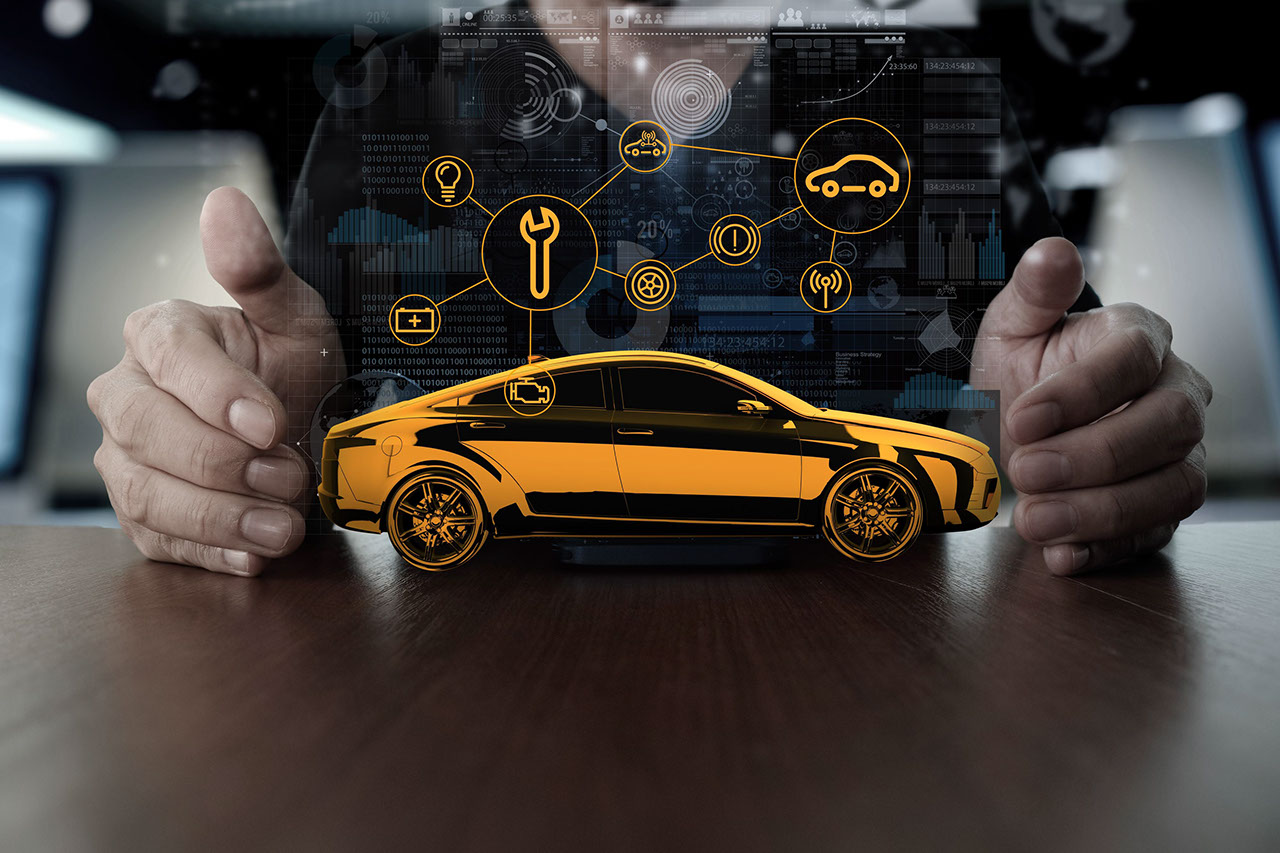
Visit Continental Tires in your country for local vehicle fitment
# Future mobility
How car connectivity is driving the future of mobility
The future of car connectivity has landed

Imagine opening your car with your smartphone, getting in to look out of a windscreen that has automatically adjusted to the weather conditions outside. Along your journey, your car changes its route based on an intelligent driver network to avoid congestion. You receive alerts along the way of nearby cyclists, wet sections of the road or any other obstacles. The car automatically adjusts if you divert from your lane. You also receive alerts about a low-pressure tire and any other maintenance issues. When you get to work, you hop out and let your car automatically park itself in a free parking spot.
The future is actually here and now.
Cars of the future will be software-driven, smartphone-connected, satellite-networked, cloud-compatible machines, capable of analyzing and learning from data and communicating with drivers and other cars. The thing is, the future is actually here and now. Some cars produced today come with over 50 connectivity features. Such connectivity enables vehicles to inform drivers about road and traffic conditions, thereby decreasing the risk of road incidents, as well as provide more intuitive access to infotainment systems or the freedom to control a vehicle from outside the car. Ultimately, it will drastically improve the safety, comfort and convenience of driving, not only for drivers but also pedestrians.
Telematics is a central theme when it comes to car connectivity as it involves transferring real-time data over long distances. Telematics consists of hardware and software, which incorporate some type of cellular communication, essentially converting vehicles into information stations. Continental’s Intelligent Antenna Module, an interface between the car and the outside world, uses telematics to enable a car to receive and share information with infrastructure, other cars, smartphones, cellular networks, satellite navigation and radio broadcast. Essentially, it enables your car to intelligently detect its surroundings, communicate with people and other vehicles in real-time, predict issues and take action to avoid potential threats.
Vehicle to everything (V2X)
Vehicle to vehicle (v2v) communication involves cars sharing data on speed and road conditions to create an ad-hoc network among vehicles, without a server. For example, one car could communicate directly with another car about black ice on a road in almost real-time. Vehicle to infrastructure (V2I) communication, on the other hand, utilizes computer vision systems, such as intelligent front cameras to detect traffic signs or obstacles, evaluate them and then provide warnings to the driver. But these technologies are no longer mutually exclusive – they continually work in parallel to enable V2X communication.

Continental’s Intelligent Image Processing Algorithm reconstructs the image under the vehicle and slots this into the surround view given by satellites and radars to provide a truly comprehensive view around the car. If the system detects another road user near the vehicle, for example, it automatically initiates emergency braking in order to avoid a collision. Birds eye view perspectives provided by satellites could enable cars of the future to identify a motorcyclist approaching rapidly from behind and the system could warn the driver or even prevent the vehicle from changing lanes as planned. Future functionalities could even measure a driver’s brain activity, predict and anticipate their behavior and prevent them from engaging in unsafe driving practices.

Look at the whole picture
Similar technology utilizes a ‘swarm intelligent system’ and camera systems to classify road conditions and create a dynamic friction chart to forecast how well the car tires will grip to the road in question. Continental’s eHorizon uses this technology to recognize changing speed limits, topology, lane markings or slippery sections on the road. It can interpret the state of the entire route, warn of city tolls and pass this information on to other vehicles traveling there.

One incredibly important application of V2X communications technology is increasing safety on the roads for cyclists and pedestrians. According to WHO’s Global Status Report, in 2018 there were 1.35 million road traffic deaths and roughly one quarter of these constitute pedestrians or cyclists. Continental’s Vision Zero aims to use such sophisticated technology to eventually lead us to zero fatalities, zero injuries and zero crashes on our roads. Accident avoidance is one of the major focal points of increased car connectivity and engineers are working to get closer to this vision every day. Continental’s Digital Shield allows a user’s smartphone to host a software application that can send the individual’s position, direction and speed to a server. This data is relayed to nearby vehicles and if the travel paths indicate a risk, for example a car turning blindly onto a road with a cyclist, the system can issue a warning and reduce the risk of a dangerous situation. Users’ can simply use the technology they already have on them, making its lifesaving repercussions inclusive and widespread.
As we’ve already seen, smartphones are crucial in the application of car connectivity. To further this, Continental’s VoicR app lets drivers broadcast voice messages to other nearby users via a public or personalized channel in real-time. Automated valet parking even allows vehicles to drive through a barrier and find a free parking space while the driver waits at the gate. Additional apps include digital roadside assistance, which automatically shares a vehicle’s GPS details in the case of an incident and can even contact relevant emergency services if the airbags are deployed. Smartwatch connectivity is also on the rise, providing remote access to in-car features like engine start/stop and stolen vehicle alert. As such, smartphones will become the key to cars and their functionalities in the future.
Collecting and learning from data
As the automobile industry creates ever increasing amounts of data, cloud services will become increasingly important for storage and transfer, satellites and servers will gain importance in speeding up communication and AI and machine learning will become vital in improving and simplifying services. Cloud services enable remote cloud key and provide safe demand car access, which is vital for car sharing platforms and ease of use. Continental’s vAnalytics is a secure cloud-based service platform that gathers anonymous data from a variety of sources, gains insightful analyses and uses these to resolve pain points. Blockchain technologies also accelerate direct and decentralized data sharing so that data can be shared in a safe and efficient way and can more accurately inform future updates and services.
ContiConnect, a service for logistics companies and fleet managers, communicates with sensors inside a tire and is networked to company premises via satellite. It allows drivers to constantly monitor loss of air pressure and avoid dangerous punctures, while also reducing mobility costs for fleet managers. Satellites could also create a 3D mobility ecosystem and enable over-the-air updates, which would lead to smart update solutions for the entire vehicle, from the powertrain to infotainment systems.

